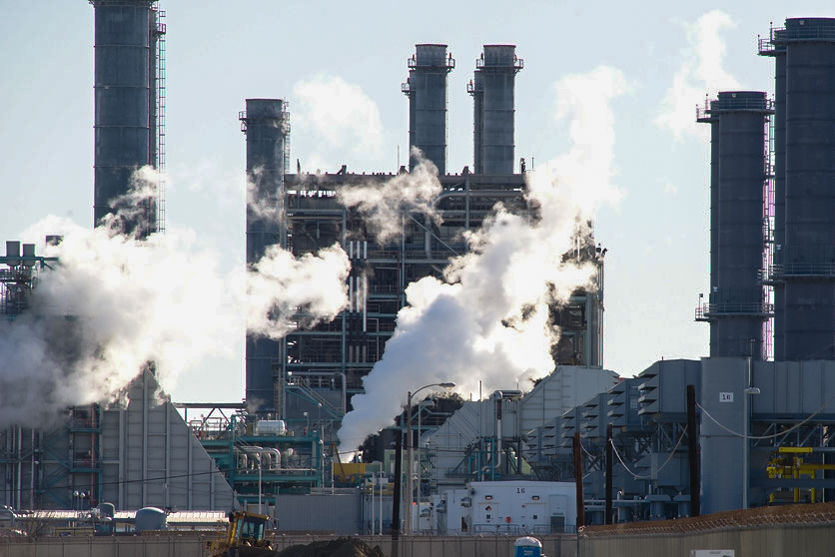The current processing of natural gas leaves behind a significant carbon footprint by emitting large quantities of carbon dioxide into the atmosphere. However, the Texas A&M University-Qatar campus is offering a new processing technique they say would reduce these emissions when processing natural gas.
According to the CaRE-Fuel Lab website, under the direction of Nimir O. Elbashi, the Qatar research team has developed the CARbon GENerator, or CARGEN, reactor to reduce the country’s carbon footprint. The development was in collaboration with professor Mahmoud M. El-Halwagi and Debalina Sengupta from the Artie McFerrin Department of Chemical Engineering at A&M’s College Station campus.
CaRE-Fuel Lab said the CARGEN technology produces two useful products by processing natural gas and carbon dioxide. The first is synthesis gas, also known as syngas, while the other is carbon nanotubes. Both of these would have various applications according to the website.
“This technology is believed to be the first of its kind,” the team writes on its website. “[It] processes natural gas (methane) and captured carbon dioxide to produce both syngas, a valuable precursor to numerous hydrocarbon feedstocks that drive Qatar’s economy, and high-quality solid carbon nanotubes (CNTs). And unlike conventional processes, all without releasing more CO2 into the atmosphere.”
A&M agricultural economics professor Bruce McCarl said current levels of carbon dioxide present a harmful environment for crops because gases keep heat from adequately leaving the Earth’s atmosphere.
“We call things greenhouse gases because carbon dioxide and a couple [of] others act as reflective surfaces in the Earth’s atmosphere,” McCarl said. “When the Sun’s rays begin to leave the Earth’s atmosphere [they] reflect off of Earth’s surface, they hit those gases and get reflected back in, and we see the wavelengths of light that carbon dioxide, for example, traps [leading] to a big hole to our emission pattern when monitored from satellites.”
McCarl said agriculture and the climate have a relationship that has been changing due to the increase of greenhouse gases present in the atmosphere. McCarl attributed this change to fossil fuel usage and agriculture as well.
“Agriculture is extremely dependant on climate,” McCarl said. “In the United States, about 85 percent of our emissions are from burning fossil fuels. Natural gas is quickly taking [coal’s] place because natural gas is cheap. Agriculture is about 30 percent on a global basis of the source. So agriculture in itself is not only greatly affected by the warmer climate, but also a pretty big source.”
However, the technology developed by Elbashi and his team does not go without questioning. Associate professor of atmospheric sciences Gunnar W. Schade said there is currently no market for the products offered.
“Let’s assume we captured carbon at power plants,” Schade said. “Then we [would have to] combine that with methane, which we have to mine, and we make synfuel and nanotubes. On a global basis, this will create a huge supply of synfuel and a huge supply of carbon nanotubes. There is no market for either of those. Even if we achieve that, the market is very limited for either of those.”
Schade also said a system like the one proposed by the CaRE-Fuel Lab would work more as a system of recycling rather than one of reducing carbon dioxide in the long run. Schade said that this technology would not only have to compete against traditional fossil fuels to be used but also renewable sources of energy in cleanliness.
“The ideal would be you essentially replace the global oil demand with this synthetic fuel,” Schade said. “[But] you’re not reducing how much total carbon emissions you have from the industry, but you’re recycling a lot. In essence, you’re reengineering the fossil fuel system, but in the end, you haven’t really reduced global carbon emissions. “
Schade said people need to pay more attention to what goes on behind the research that many teams produce. Schade said there could be schemes to benefit the interest of those that paid for the study.
“So this is where I come back to, ‘Where was this research done?’ and, ‘Who is paying for it?’” Schade said. “There’s plenty of research that goes into carbon sequestration and utilization. [And] essentially, all these schemes are supported strongly by the fossil fuel industry and designed to keep using fossil fuels.”
New natural gas processing technology meant to reduce carbon footprint
October 22, 2019
Photo by Creative Commons
The Texas A&M-Qatar campus is researching way to reduce carbon dioxide emissions when processing natural gas.
0
Donate to The Battalion
$2065
$5000
Contributed
Our Goal
Your donation will support the student journalists of Texas A&M University - College Station. Your contribution will allow us to purchase equipment and cover our annual website hosting costs, in addition to paying freelance staffers for their work, travel costs for coverage and more!
More to Discover










